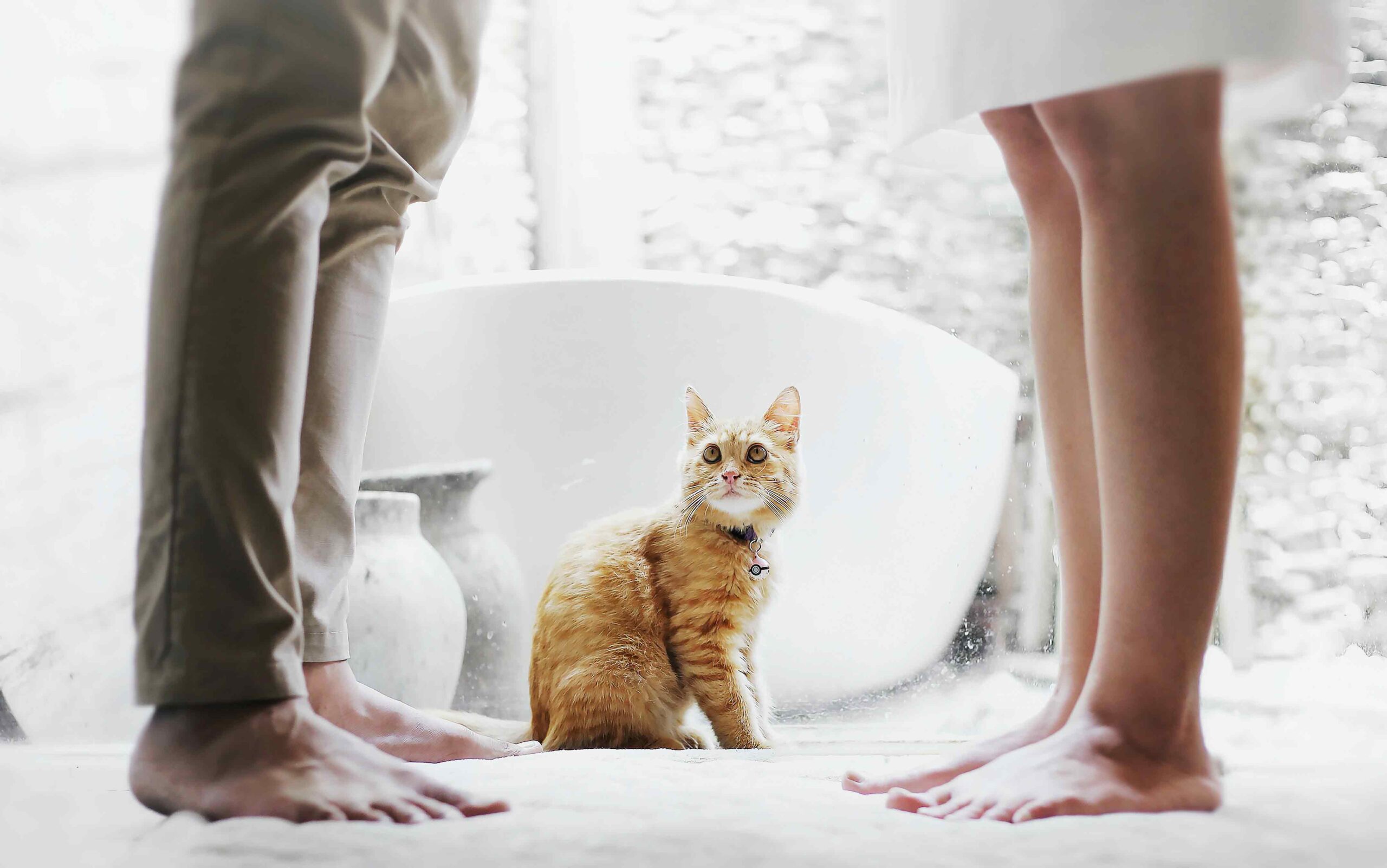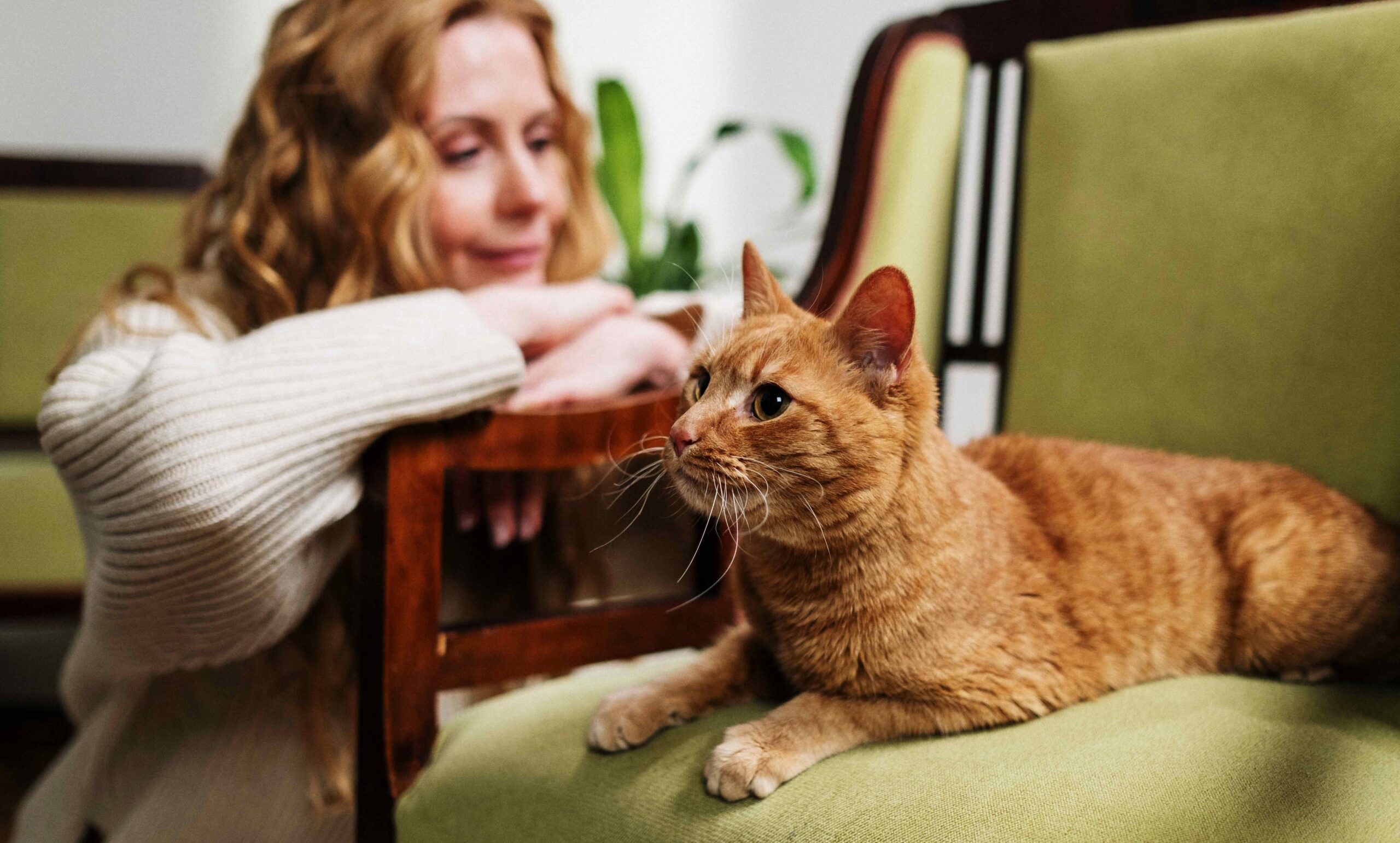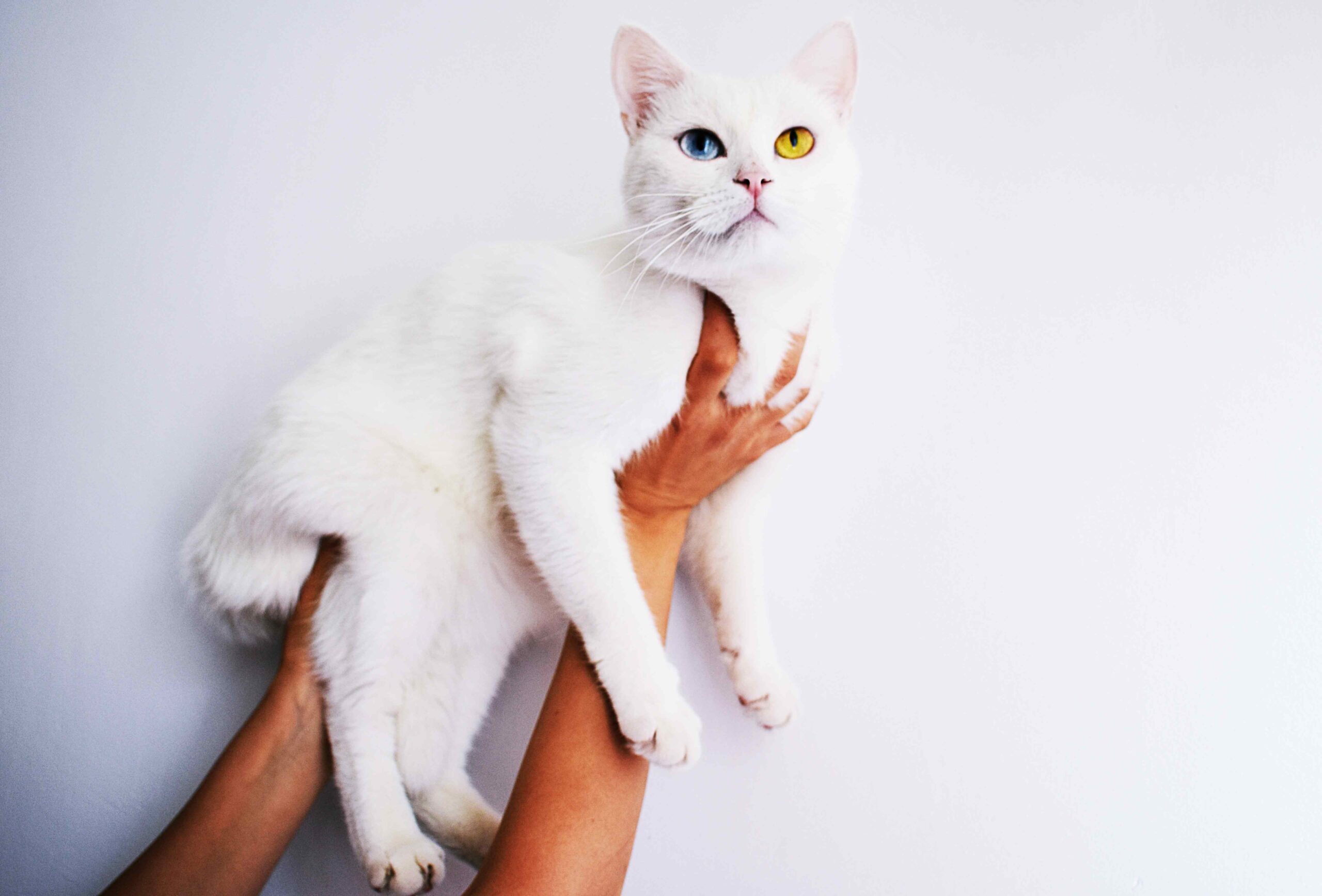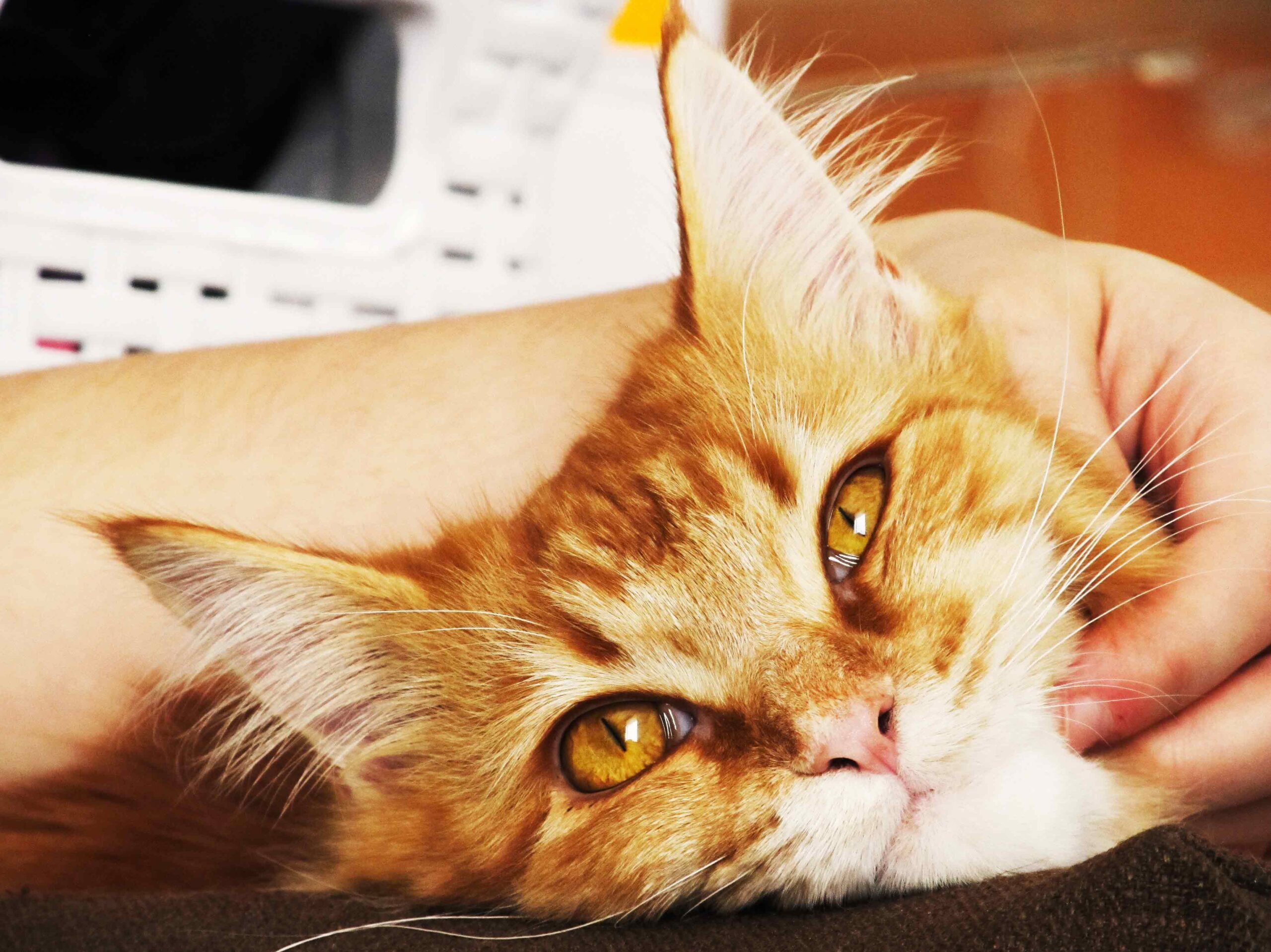
How to tell if a cat is a boy or a girl? With over 86 million domestic cats in the United States alone, it’s essential to know if your cat is male or female—not just so you can name it appropriately, but because certain medical conditions and diseases only occur in certain genders felines. In addition, some behaviors are more common in males and others in females, so it’s good to know which of your pets are male or female if you own more than one cat. Here are 10 ways to tell if your cat is male or female.
Is your cat a boy or a girl? You can’t always tell just by looking at them, but some clues can help you figure it out! In the world of cats, female kitties are known as queens or girls, and male kitties are known as toms or boys. Some signs don’t apply to all kitties – especially cats who have been neutered or spayed – but they can give you an idea of what your cat’s gender might be!

1) Tail
Cats have cute, fluffy tails that wag when they’re happy. You might think you can determine a cat’s gender by its tail, but it’s not always an accurate indicator. Some male cats have long tails, and some female cats have stubby ones. The length of your kitty’s tail is partially determined by genetics, so if one of your parents was a boy cat with longish fur, there’s a good chance you could grow up to be one as well. It’s worth noting that breeders who use tail length as their only method for determining gender aren’t doing their job correctly; they should look at many traits in addition to tail length, including behavior and gait.
2) Eyes
Male cats tend to have vertical pupils. Female cats have round pupils. Both genders have very dreamy eyes and may reflect blue, green, yellow, orange, red—almost any color in between. This can make it hard to tell what Color your cat’s eyes are unless they’re looking straight at you. Typically though, male cats’ pupils are vertical (like slits), and female cats’ are round like dots.
3) Cheeks
Male cats have larger and fluffier cheeks than females. Females also tend to have shorter faces than males, so they appear rounder in shape overall. Additionally, male cats generally cannot be identified by their facial hair, unlike many dogs and humans. For example, because female cats do not grow beards (unless they are spayed), it’s much easier for a vet to tell genders apart using only visual clues. One thing that does help determine gender in cats of both sexes is teeth: Male cats’ upper front teeth (incisors) will jut out from their mouths slightly further than female cats’. This is most noticeable when felines are playing or snarling aggressively with one another.
4) Ears
A cat’s ears are often one of the easiest ways to tell if they’re male or female. Most male cats have slightly longer, thicker ears than females, while many female cats have tufts of fur in their ears. This can make it easier for them to keep cool during warm weather. Ears: A cat’s ears are often one of the easiest ways to tell if they’re male or female. Most male cats have slightly longer, thicker ears than females, while many female cats have tufts of fur in their ears. This can make it easier for them to keep cool during warm weather.
5) Fur Texture
If you’re looking at a cat in profile, and you can see down its belly, fur texture can be an easy way to tell whether it’s male or female. Cats with thicker fur tend to be males, while females are more likely to have smoother coats. Look at how much of their hair stands up on end, too—more tufts of fur sticking out usually means they’re male. This distinction doesn’t apply when looking at cats face-on, though; often, both sexes look very similar in that case.

6) Coat Color
There are differences in coat color between male and female cats. Male cat coats usually have dark brown, black, or gray markings, while female cats are often paler. For example, a male Maine Coon has darker fur than his female counterpart, whereas males from breeds such as Siamese tend to be lighter colored. A good rule of thumb is that males are generally more colorful than females. If you’re still unsure about your cat’s gender after checking its coat color, look at how tall it stands on its back legs—female cats often stand taller than males because of their wider hips.
7) Height and Girth
Cats are generally gender-neutral when it comes to size. However, boy cats tend to be more slender and agile, while girl cats tend to be plumper with more muscular limbs and muscle tone. These differences can show in kittens as young as eight weeks old, so don’t worry too much about distinguishing gender by girth until your cat reaches adulthood. Once they reach sexual maturity around 5 months of age, you’ll have a better idea of their actual physique and gender designation.
8) Behavior
Is your cat more likely to be affectionate with its owners than strangers? If yes, it’s probably female. After all, male cats are usually more territorial and protective of their owners. Meanwhile, female cats will act as though they own you rather than you owning them. Also, look for other signs that indicate whether your kitty has been neutered (if it has, then it’s probably female). Spaying and neutering also cause physical changes in male and female cats—for example, unsheathed testicles on males become smaller while female ovaries shrink—so that can be an easy way to tell as well.
9) Time of Year Section
Whether male cats, also known as tomcats, start growing their manes in winter depends on their coat color. Hairs are more prominent and darker in Color than neck fur and grow thicker as seasons change. Meanwhile, female cats called queens tend to have shorter and less abundant fur coats during the winter months. In some cases, however, breeding may cause queens’ skins to become noticeably longer and thicker during cold weather.
10) What gender do their genitals indicate?
Just like with humans, genitals can be used to indicate gender. Cats with testicles are typically male, and spayed cats generally are female; however, there are other ways to tell for sure. Because males tend to be larger than females, weigh more and develop faster, it’s possible that your cat was born intersex (with both male and female organs), or it could be that they were born female but were spayed early on in life (in which case they will have undergone what’s called an ovariohysterectomy). Contact your veterinarian if you think your cat might not be a boy or girl.

11) What is the Color of their tongue?
The Color of your cat’s tongue can tell you whether it’s male or female. According to Cuteness, most adult cats have pink tongues except for males, who have dark brown languages. Since female cats typically give birth to many kittens, they have lighter tongues than male cats. If you can see a pink line at the bottom of your cat’s tongue, then it means that he is male; females tend not to have lines at all on their tongues. The Color of your pet’s teeth also gives clues about his gender. White-toothed cats are typically female, while cats with yellow teeth are often males.
12) How does their coat feel?
The easiest way to tell if your cat is a boy or girl is simply by feeling their coat. A female cat’s fur will feel thicker than her male counterpart’s. This can be true even in cats with short, thin coats, although it won’t be as noticeable. Don’t worry about waking up your kitty—this only takes one second! Just pet her gently and see what you come up with. The bumpy feeling you get when you rub her belly tells all!
13) What are their favorite toys?
Check out their favorite toys if you’re looking for cats with similar playstyles and interests. Most cats share identical preferences regarding what they like to bat around, carry around, and sleep on. One study found that over 80% of cat-cat interactions involve playing with toy mice. So look at your cat’s toy selection; does it closely resemble a mouse (or some other mammal)? If so, there’s a good chance your pet is male. However, these toys aren’t only used for hunting; one study found that two-thirds of male kittens played with toys more than females did when they were young.
14) How do they move and run?
If your cat moves like an athlete, you’re probably looking at a girl. But keep in mind that some boys are sprinters. And while adult males tend to be larger than adult females, not all male cats are beefy; many of them appear slimmer and sleeker. Male cats tend to have larger heads, broader shoulders, and more enormous paws than females do. For more visual clues on determining gender, please look at our slideshow on sexing kittens and get familiar with your pet’s genitals. They’re often more accessible for cat owners to distinguish than for people who aren’t used to looking there! (Yes—we had someone use that excuse.)
15) Do they prefer being alone or with the company?
Have you ever been sitting in your room reading, when all of a sudden, you’re startled by some strange animal approaching? It could be anything: A bird that flew into your window, an escaped gerbil from next door’s children, or even a cat! With all of these potential pets running around out there, how can you tell whether it’s male or female? To ensure that it isn’t rabid and has found its way home from somewhere (yes—catnapping does happen), here are ten ways to determine whether an approaching feline is a more likely male than female. Just remember: Never approach a cat who doesn’t appear familiar to you.

16) Are they vocal or quiet?
Male cats tend to be much more vocal than female cats, as they must mark their territory with loud purrs and chirps. If you are looking for a quiet cat, keep an eye out for females. Check how your cat acts around other animals: A good indication of gender can often be found in how your cat interacts with others. A male kitten will usually want to wrestle and playfight, while female kittens are more likely to avoid confrontations. When it comes down to it, you can easily separate playtime by separating them until they’re ready for bed! Is there fur on their chest?: While females typically have smooth coats, males tend to grow thick mats of hair that cover up most of their bodies.
17) Do they groom themselves frequently?
If your cat grooms itself frequently, it’s likely a boy. On average, male cats will spend about 12% of their time grooming themselves. If you see your cat grooming more than 12% of his time and your cat is neutered, chances are he’s a boy. However, both males and females like to groom themselves, so it’s not uncommon for both sexes to do so frequently. As your kitty ages and slows down, they may groom less often than before, but it could be due to other health issues as well. So keep an eye on them as they get older, just in case it’s an indication of something else going on!
18) How long can they hold their tail up in the air?
When it comes to sexual maturity, size matters, most male cats have a longer and thicker body than females of similar age. This difference becomes even more pronounced as they get older; by five years old, males weigh an average of ten pounds while females only weigh seven pounds. Their bone structure may also be slightly different, and there are visible differences in both their faces and whiskers: male whiskers tend to grow longer than females when they mature. The oldest way you can tell?

